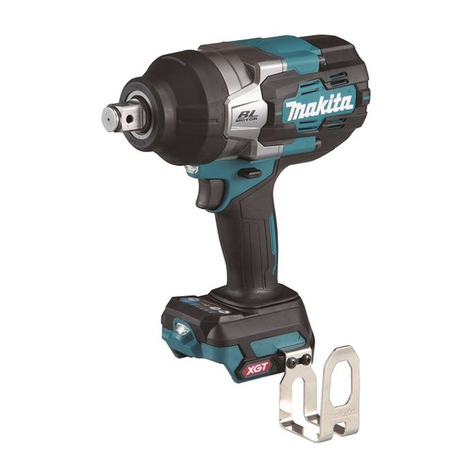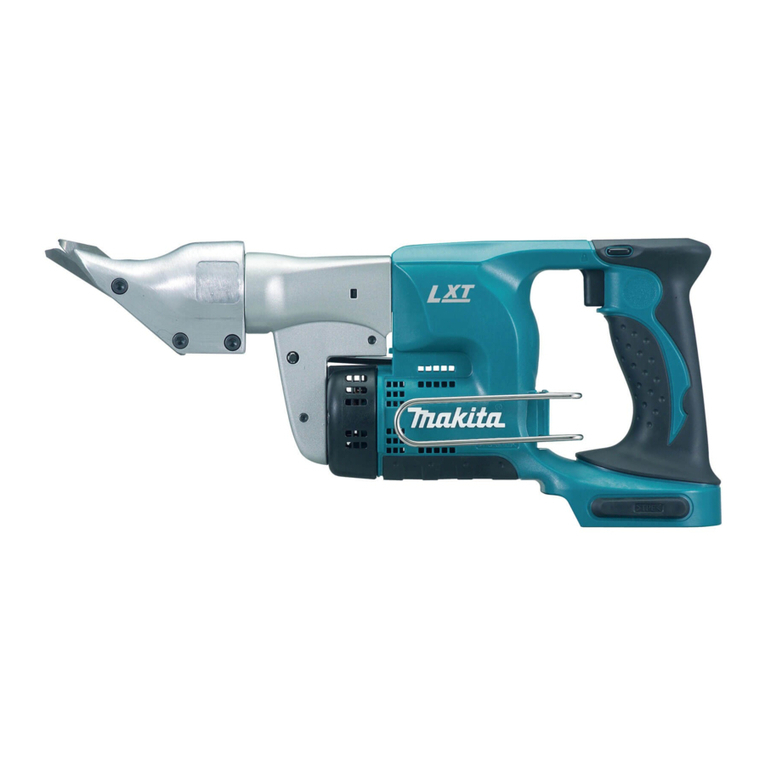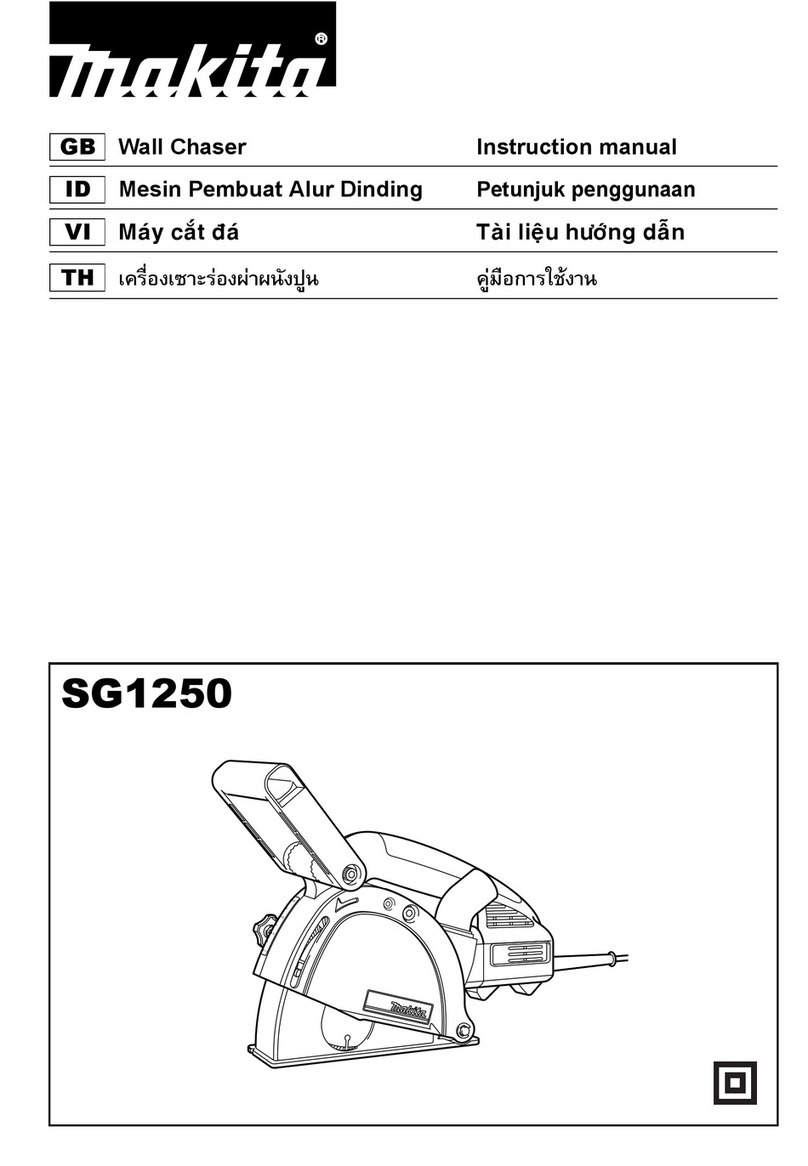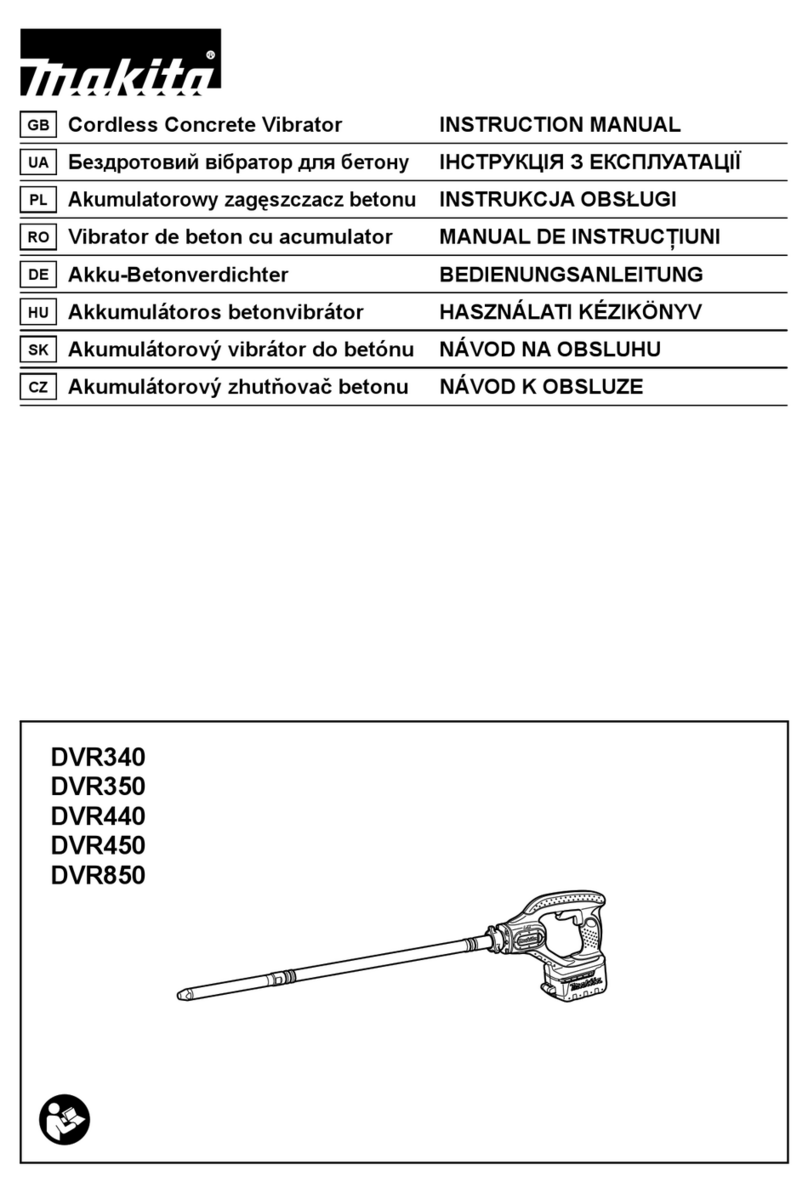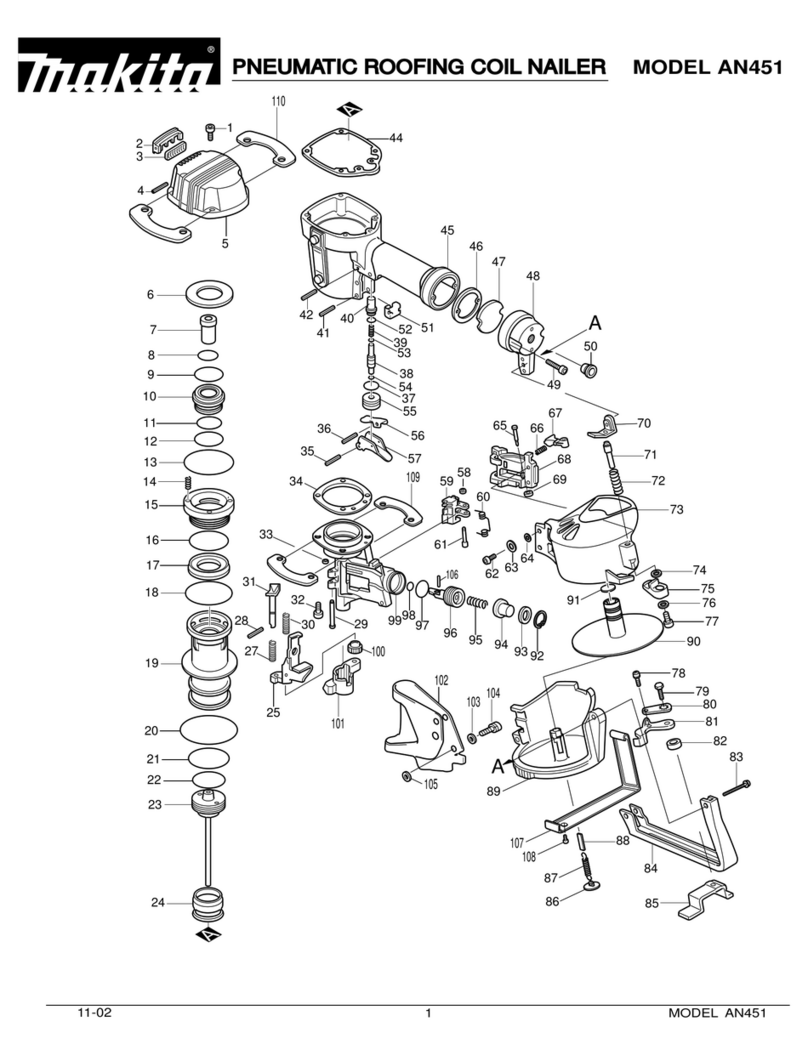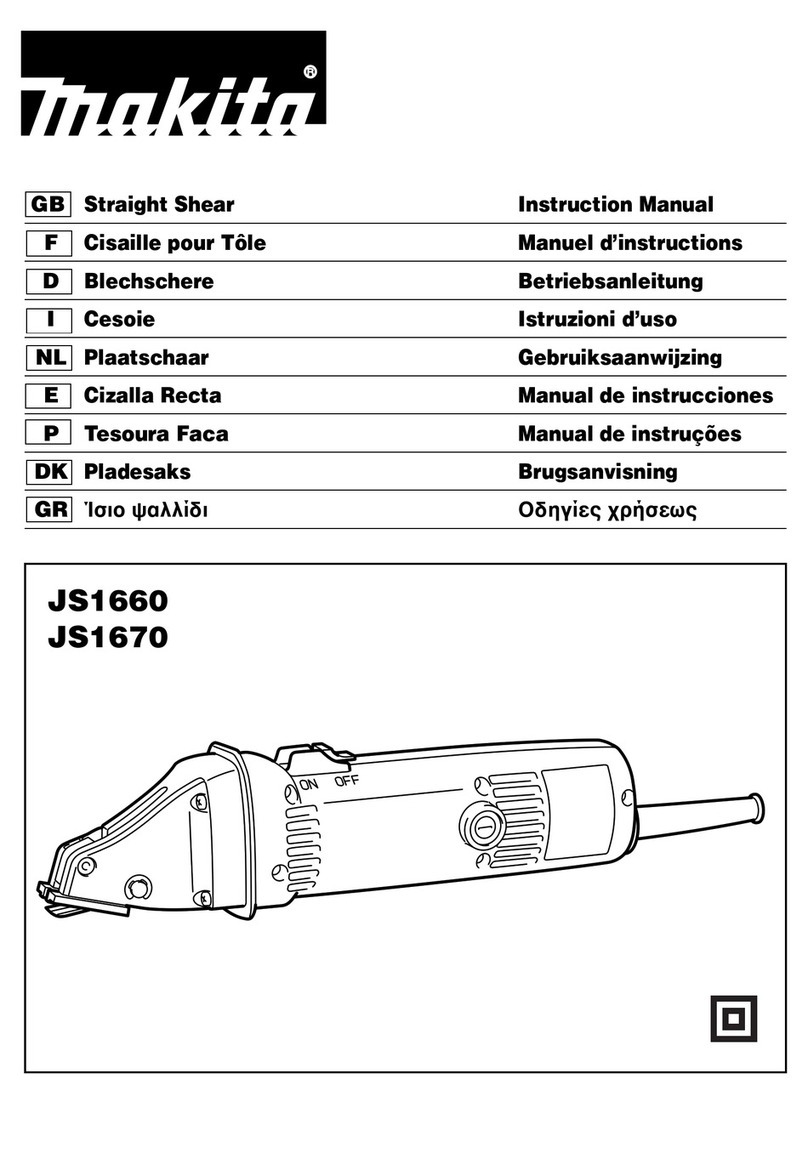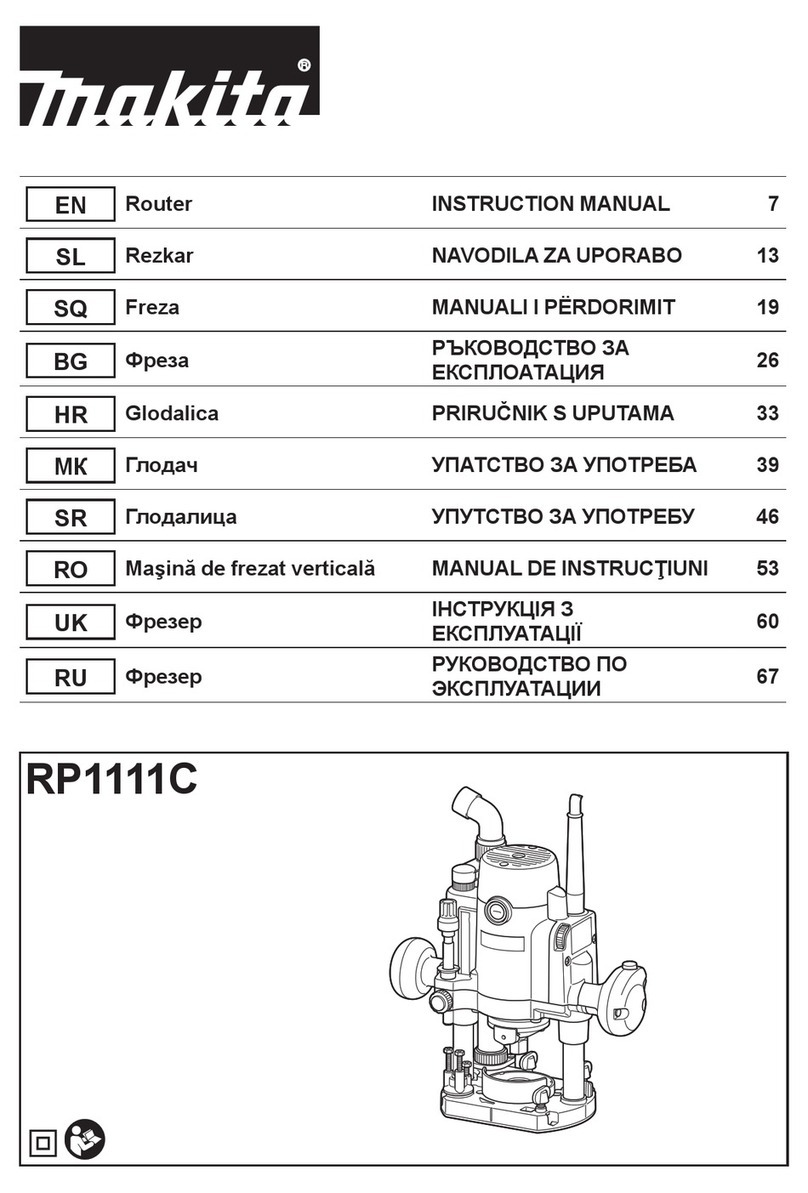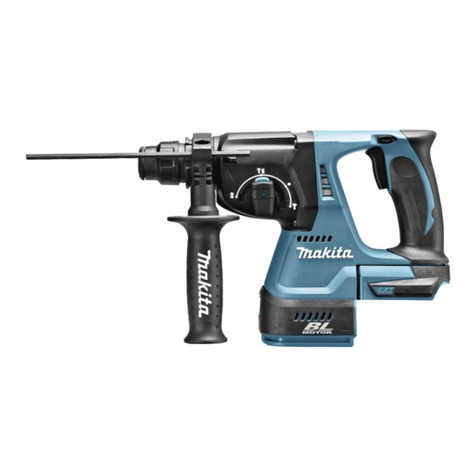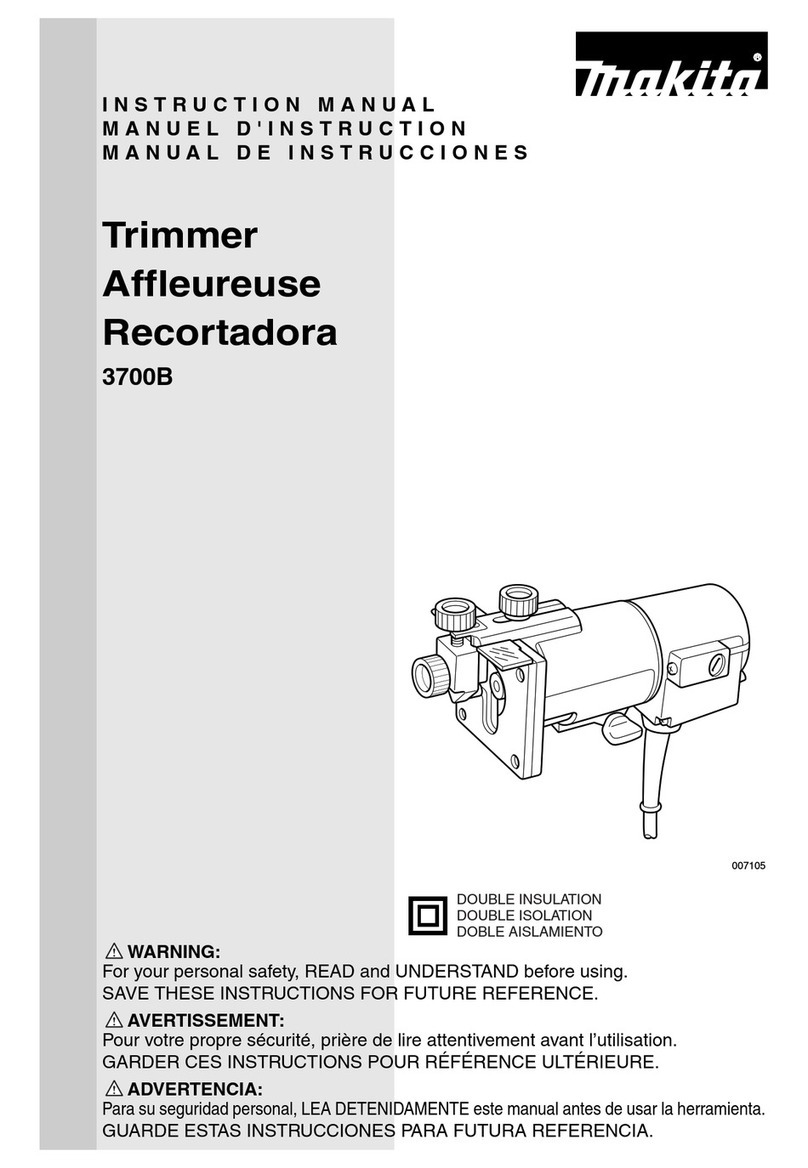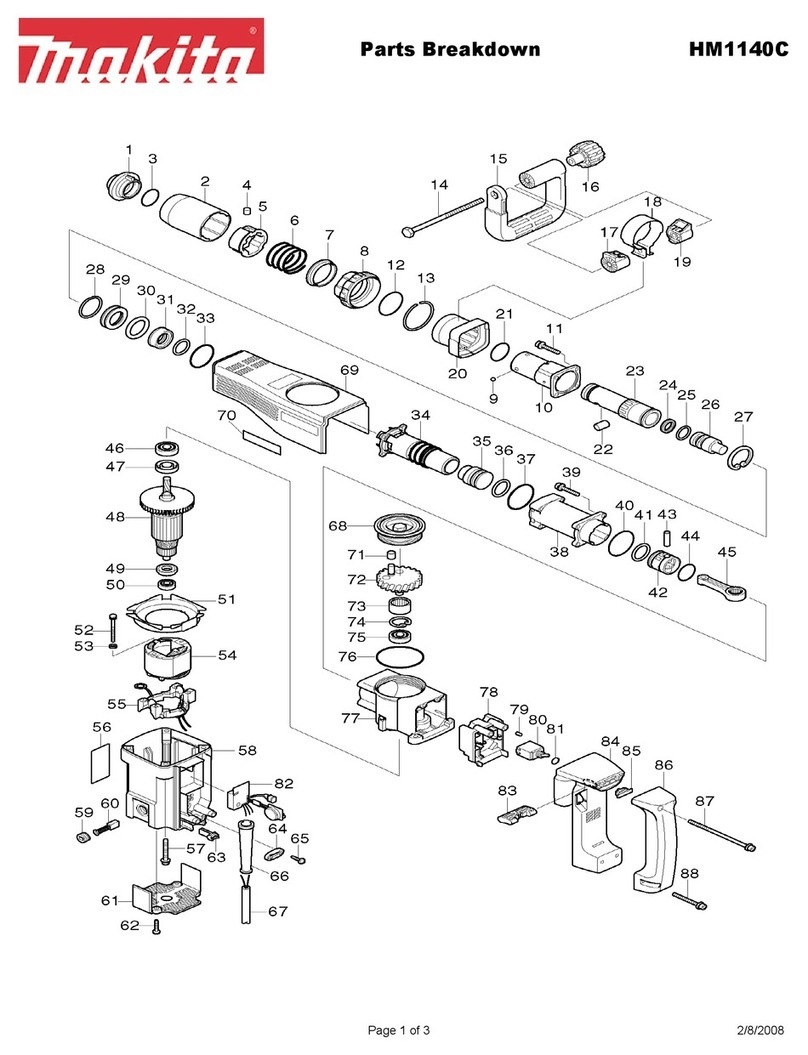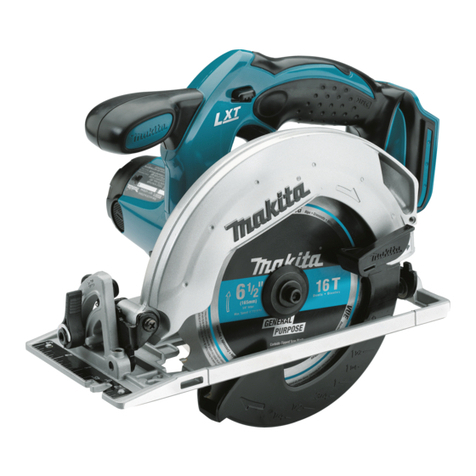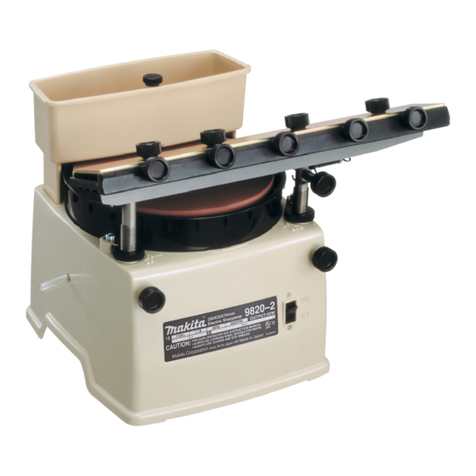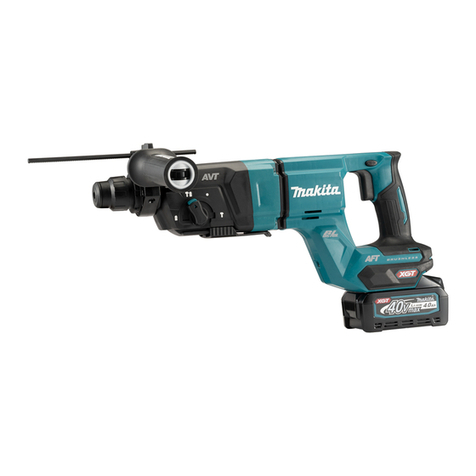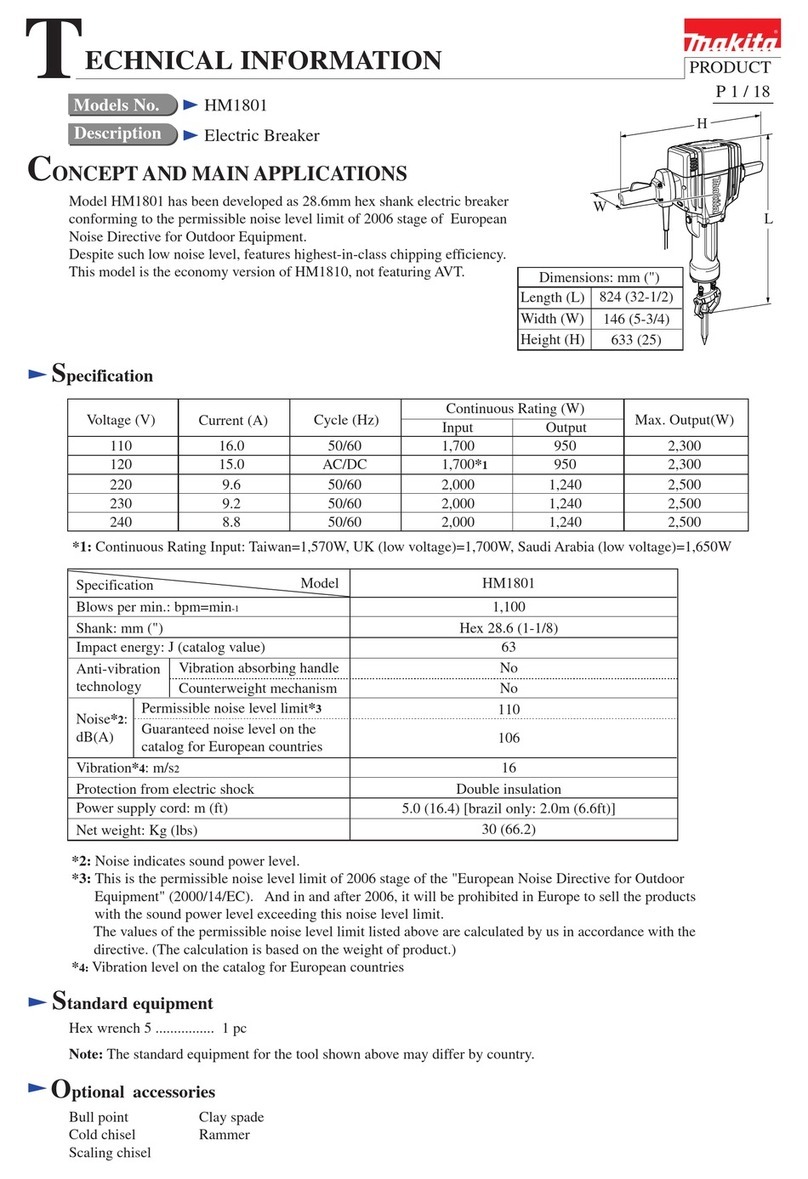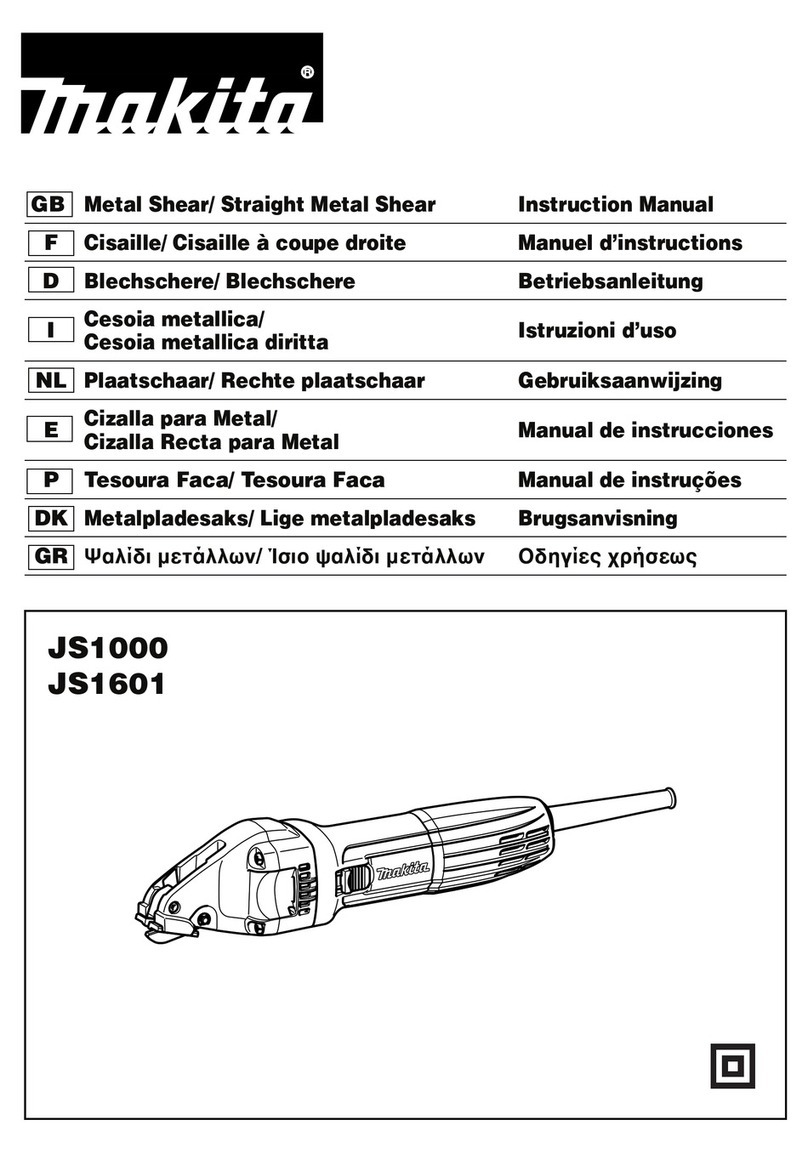8
OPERATING INSTRUCTIONS
Removing or installing planer blades
Important:
•Always be sure that tool is switched off and unplugged
before removing or installing the blade.
•Use the following planer blades.
Part Nos. 793004-6 793007-0 793322-2
A-07406 *P-04226 *P-04282
*P-04298 *820044-1 *820045-1
*820043-1
Blades with * mark are available in European countries
only. Consult your dealer or the Makita Service Center
when purchasing blades.
For tool with standard planer blades
(Fig.1,3&4)
To remove the blades on the drum, unscrew the three
installation bolts with the socket wrench. The drum cover
comes off together with the blades.
To install the blades, first clean out all chips or foreign
matter adhering to the drum or blades. Use blades of the
same dimensions and weight, or drum oscillation/vibra-
tion will result, causing poor planing action and, eventu-
ally, tool breakdown.
Place the blade on the gauge base so that the blade
edge is perfectly flush with the inside edge of the gauge
plate. Place the adjust plate on the blade, then simply
press in the heel of the adjust plate flush with the back
side of the gauge base and tighten two screws on the
adjust plate. Now slip the heel of the adjust plate into the
drum groove, then fit the drum cover on it. Tighten the
three installation bolts evenly and alternately with the
socket wrench.
For tool with mini planer blades (Fig. 1, 5 & 6)
1. Remove the existing blade, if the tool has been in
use, carefully clean the drum surfaces and the drum
cover. To remove the blades on the drum, unscrew
the three installation bolts with the socket wrench.
The drum cover comes off together with the blades.
2. To install the blades, loosely attach the adjust plate
to the set plate with the pan head screws and set the
mini planer blade on the gauge base so that the cut-
ting edge of the blade is perfectly flush with the
inside flank of the gauge plate.
3. Set the adjust plate/set plate on the gauge base so
that the planer blade locating lugs on the set plate
rest in the mini planer blade groove, then press in
the heel of the adjust plate flush with the back side
of the gauge base and tighten the pan head screws.
4. It is important that the blade sits flush with the inside
flank of the gauge plate, the planer blade locating
lugs sit in the blade groove and the heel of the adjust
plate is flush with the back side of the gauge base.
Check this alignment carefully to ensure uniform cut-
ting.
5. Slip the heel of the adjust plate into the groove of the
drum.
6. Set the drum cover over the adjust plate/set plate
and screw in the three hex flange head bolts so that
a gap exists between the drum and the set plate to
slide the mini planer blade into position. The blade
will be positioned by the planer blade locating lugs
on the set plate.
7. The blade’s lengthwise adjustment will need to be
manually positioned so that the blade ends are clear
and equidistant from the housing on one side and
the metal bracket on the other.
8. Tighten the three hex flange head bolts (with the
socket wrench provided) and hand rotate the drum
to check clearances between the blade ends and the
tool body.
9. Check the three hex flange head bolts for final tight-
ness.
10. Repeat procedures 1 –9 for other blade.
For shiplapping (Fig. 7)
The blade edge should be made to protrude outside
slightly (0.3 mm –0.6 mm). Otherwise, nicks and gener-
ally poor shiplapping results.
CAUTION:
Tighten the blade installation bolts carefully when attach-
ing the blades to the tool. A loose installation bolt can be
dangerous. Always check to see they are tightened
securely.
